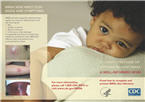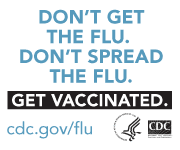
Information for Healthcare Professionals
When a patient has a skin infection, it may very likely be MRSA.
Recent data suggest that MRSA in the community is increasing. The spectrum of disease caused by MRSA appears to be similar to that of Staphylococcus aureus in the community. Skin and soft tissue infections (SSTIs), specifically furuncles (abscessed hair follicles or “boils”), carbuncles (coalesced masses of furuncles), and abscesses, are the most frequently reported clinical manifestations. The role of MRSA in cellulitis without abscess or purulent drainage is less clear since cultures are rarely obtained.
When to Consider MRSA
The Centers for Disease Control and Prevention (CDC) encourages you to consider MRSA in the differential diagnosis of SSTIs compatible with S. aureus infections, especially those that are purulent (fluctuant or palpable fluid-filled cavity, yellow or white center, central point or “head,” draining pus, or possible to aspirate pus with needle or syringe). A patient’s presenting complaint of “spider bite” should raise suspicion of a S. aureus infection.
Primary Treatment Options for MRSA Skin Infections
Incision and drainage constitutes the primary therapy for these purulent skin infections. Empiric antimicrobial coverage for MRSA may be warranted in addition to incision and drainage based on clinical assessment (e.g., presence of systemic symptoms, severe local symptoms, immune suppression, extremes of patient age, infections in a difficult to drain area, or lack of response to incision and drainage alone). For severe infections, consider consulting with an infectious disease specialist. Obtaining specimens for culture and susceptibility testing is useful to guide therapy, particularly for those who fail to respond adequately to initial management.
MRSA skin infections can develop into more serious infections. It is important to discuss a follow-up plan with your patients in case they develop systemic symptoms or worsening local symptoms, or if symptoms do not improve within 48 hours.
What is MRSA?
Methicillin-resistant Staphylococcus aureus (MRSA) is an antimicrobial-resistant type of S. aureus that is resistant to currently available beta-lactam antibiotics including penicillins (e.g., penicillin, amoxicillin), “anti-staphylococcal” penicillins (e.g., methicillin, oxacillin), and cephalosporins (e.g., cephalexin).
Educate Patients to Prevent Spread
Patient education is a critical component of MRSA case management. Healthcare professionals should educate patients, caretakers and, when possible, household members on methods to avoid MRSA transmission to close contacts.
MRSA is typically spread by:
- Having direct contact with another person’s infection
- Sharing personal items, such as towels or razors, that have touched infected skin
- Touching surfaces or items such as used bandages contaminated with MRSA
- Page last reviewed: Sept 8, 2008
- Page last updated: Sept 8, 2008
- Content source: Centers for Disease Control and Prevention,
National Center for Preparedness, Detection, and Control of Infectious Diseases (NCPDCID),
Division of Healthcare Quality Promotion (DHQP)
Contact Us:
- Centers for Disease Control and Prevention
National MRSA Education Initiative
1600 Clifton Rd,
MS A35
Atlanta, GA 30333 - 800-CDC-INFO
(800-232-4636)
TTY: (888) 232-6348
24 Hours/Every Day - cdcinfo@cdc.gov
 National MRSA Education Initiative Campaign Materials
National MRSA Education Initiative Campaign Materials
Educational materials can be downloaded and printed free of charge. Also, limited quantities of printed materials can be ordered by visiting CDC INFO


